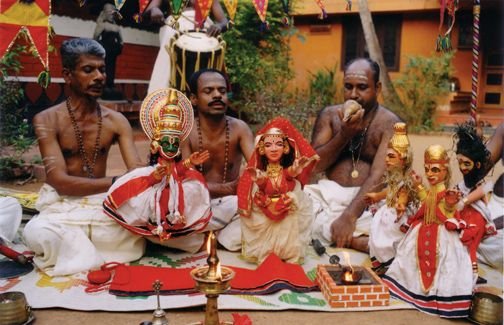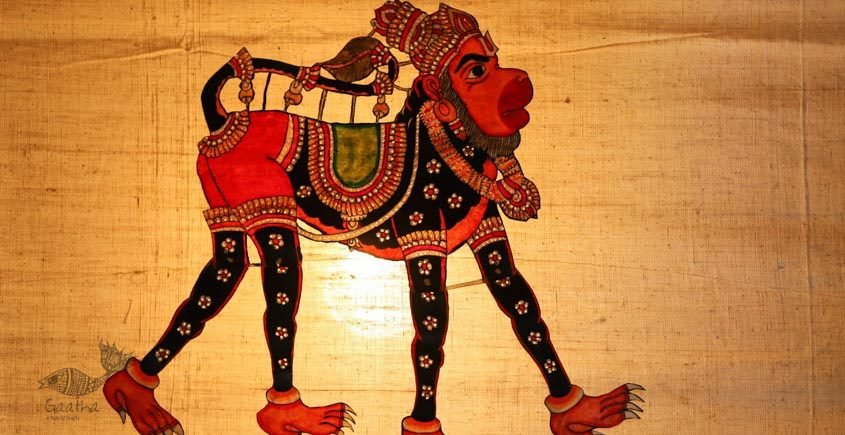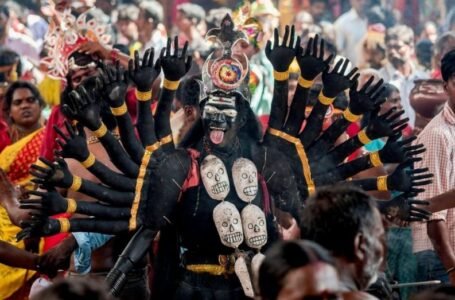PUPPETRY: TRADITIONAL MEDIA FORM OF INDIA

PUPPETRY
Puppetry is the indigenous theatre of India. It is a subject as varied as many other cultural traditions of the Indian subcontinent. From times immemorial, it has been the most popular and well appreciated form of entertainment available to people. The art of puppetry includes the making and manipulation of puppets for use in some kind of theatrical performance. The suggestive element of a puppet being controlled by a master makes it an intriguing experience for the audience.

The origin of puppetry in India cannot be dated but some scholars believe that the puppetry art tradition is more than thousands of years old. Their reference can be found in many folk tales, ballads and in folk songs. Even Indian mythology provides a few stories that throw light upon the importance of this art.

According to a legend, the creator Brahma gave life to adi, the first nat puppeteer, and created the first puppet for the entertainment of his wife Saraswati. Not satisfied with his work, Brahma banished the puppeteer to Earth, starting the line of “nat bhatt” puppeteers of Rajasthan. According to the another legend, an artisan manufactured two wooden dolls which captured the attention of goddess Parvati. So the goddess and her divine companion, Lord Shiva, the patron of puppetry, entered the dolls and started an exquisite dance; after getting sick of this play, they abandoned the dolls which made the artisan upset because his dolls were now lifeless. So with the blessings of the gods, the artisan then invented a system of strings to move the dolls and thus puppetry was born. Another reference to puppetry can be found in Bhagvad Gita. It says that all men have three qualities in them which are the “Sattva” which means goodness , the “Rajas” meaning passion and the “Tamas” which means ignorance which are referred to as stings that are pulled by the divine to lead mankind. Divine origin of puppetry is stressed in all these stories which testifies the importance of puppetry in India.

Puppetry has long been of interest in India both for education and entertainment. The excavation sites in Harappa and Mohenjo-Daro have yielded puppets which suggest the presence of puppetry as an art form.
Puppetry is a type of narrative theatre; at the crossroads between bardic storytelling and theatre plays. There are different forms of puppetry in the country and in different parts of the country, regional variations of style and theme are reflected in them. Though there is enormous diversity in regional forms of puppetry, there are common traits too. The stylized vocabulary of puppetry carries local myths and legends usually with the message of social awareness, moral values, historical and traditional subjects. The themes of puppet theatre are mostly based on epics and legends. Archaeological and literary sources of Indian history of subsequent periods amply prove the evidences of puppets. Several regional genres make puppetry one of the richest heritages in India. Puppetry is indeed one of the most ingenious inventions of mankind.

In puppetry, puppets are only a tool and the genuine work is done by a puppeteer. In India, four types of puppetry are popular namely- Sutradharika (String puppets), Putul Nauch (Rod puppets), Chhaya Putli (Shadow puppets), and Glove puppets or hand puppets. In India at many places you will still find various types of puppet shows especially in the interior areas like Rajasthan and Odisha. The most famous and dominating type of Indian puppetry is Kathputli which is local to Rajasthan. Kathputli in Rajasthani implies a wooden doll. Every one of the manikins utilized are totally produced using wood and wearing cotton garments. The garments are intelligent of the customary Rajasthani clothing. It is held by a metal string from the highest point of its body. Shadow manikins are far-reaching in South India which is regularly considered as the country for this workmanship. The shadow manikins are produced using calfskin and it is blessed to receive cause it to appear to be clear. For certain forms, the shadows are dark and as far as some might be concerned, it is controlled to cause it to appear to be hued, similar to red or green.
Puppetry is indeed one of the most ingenious inventions of mankind.



